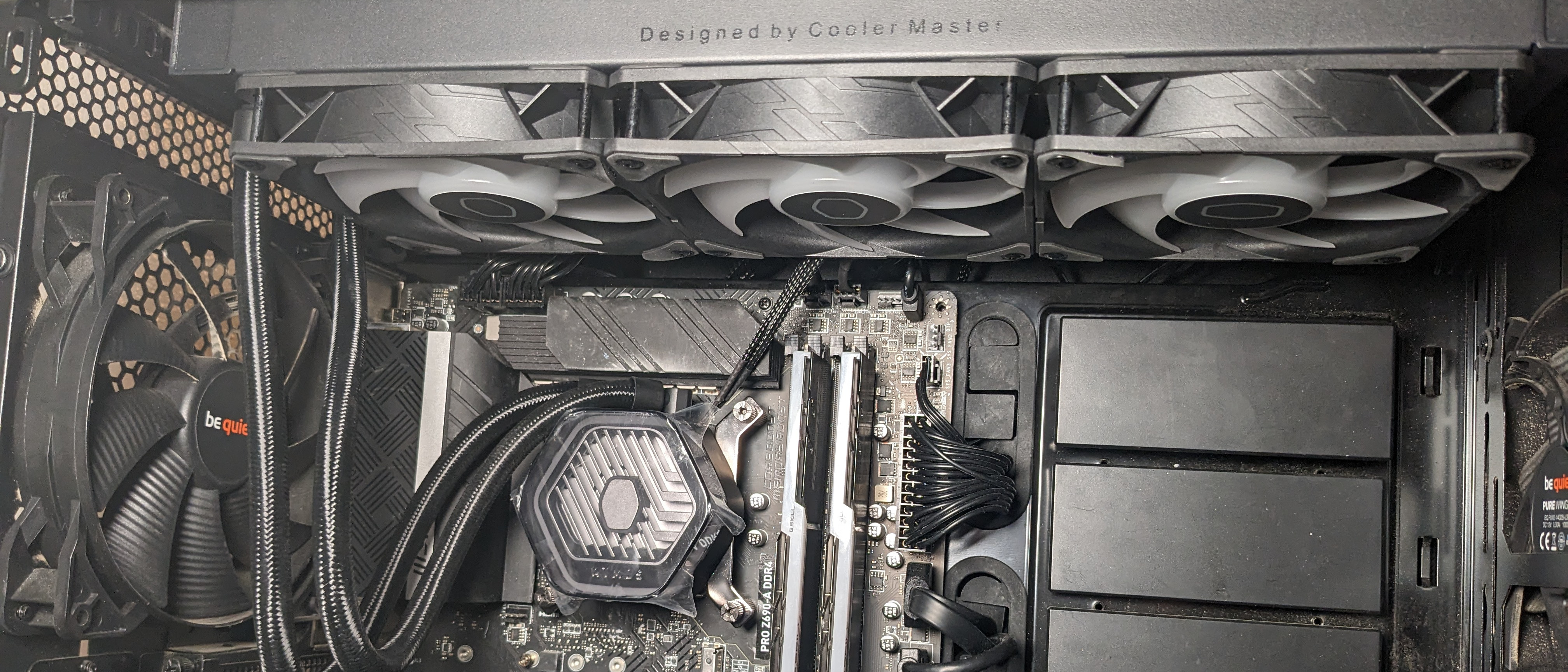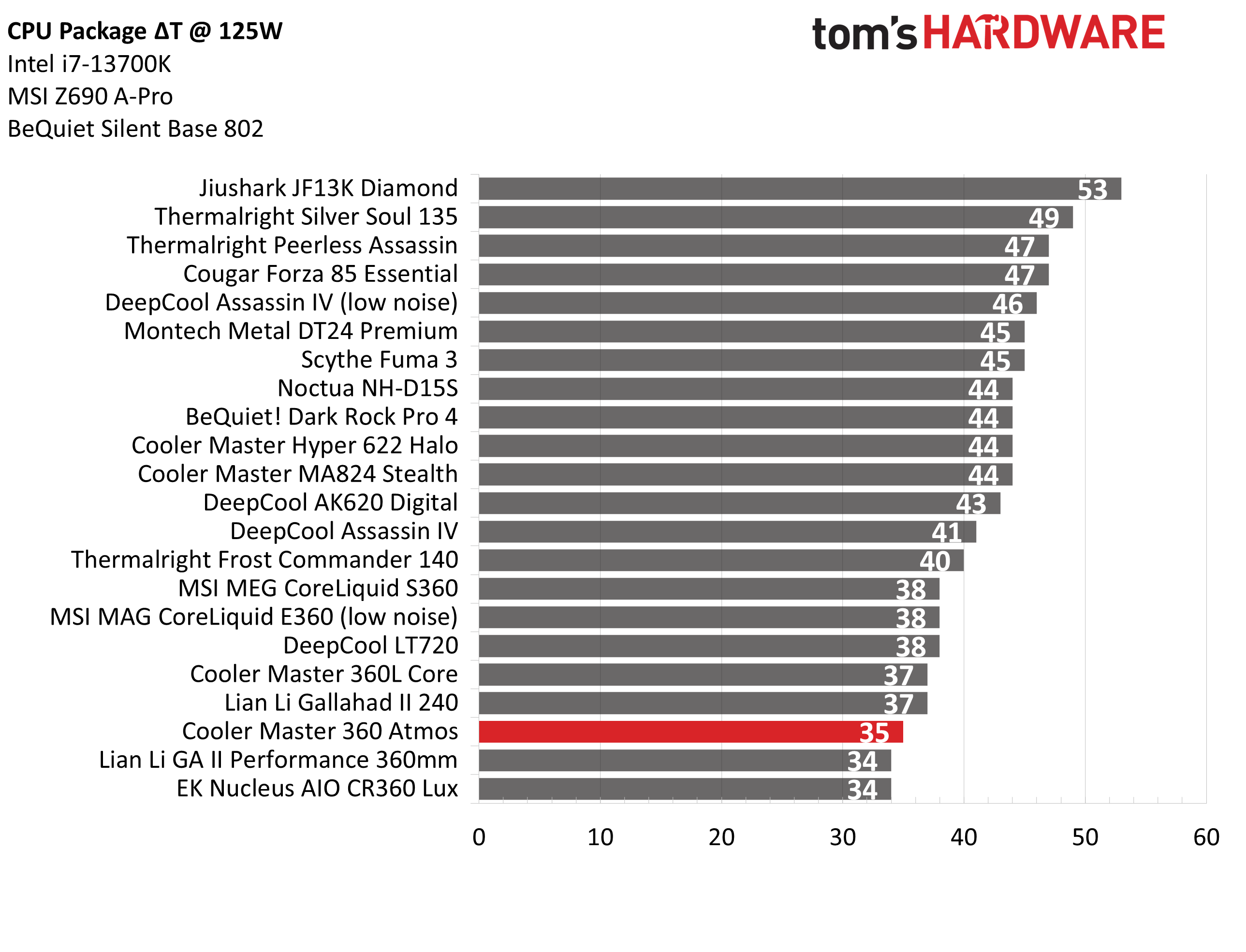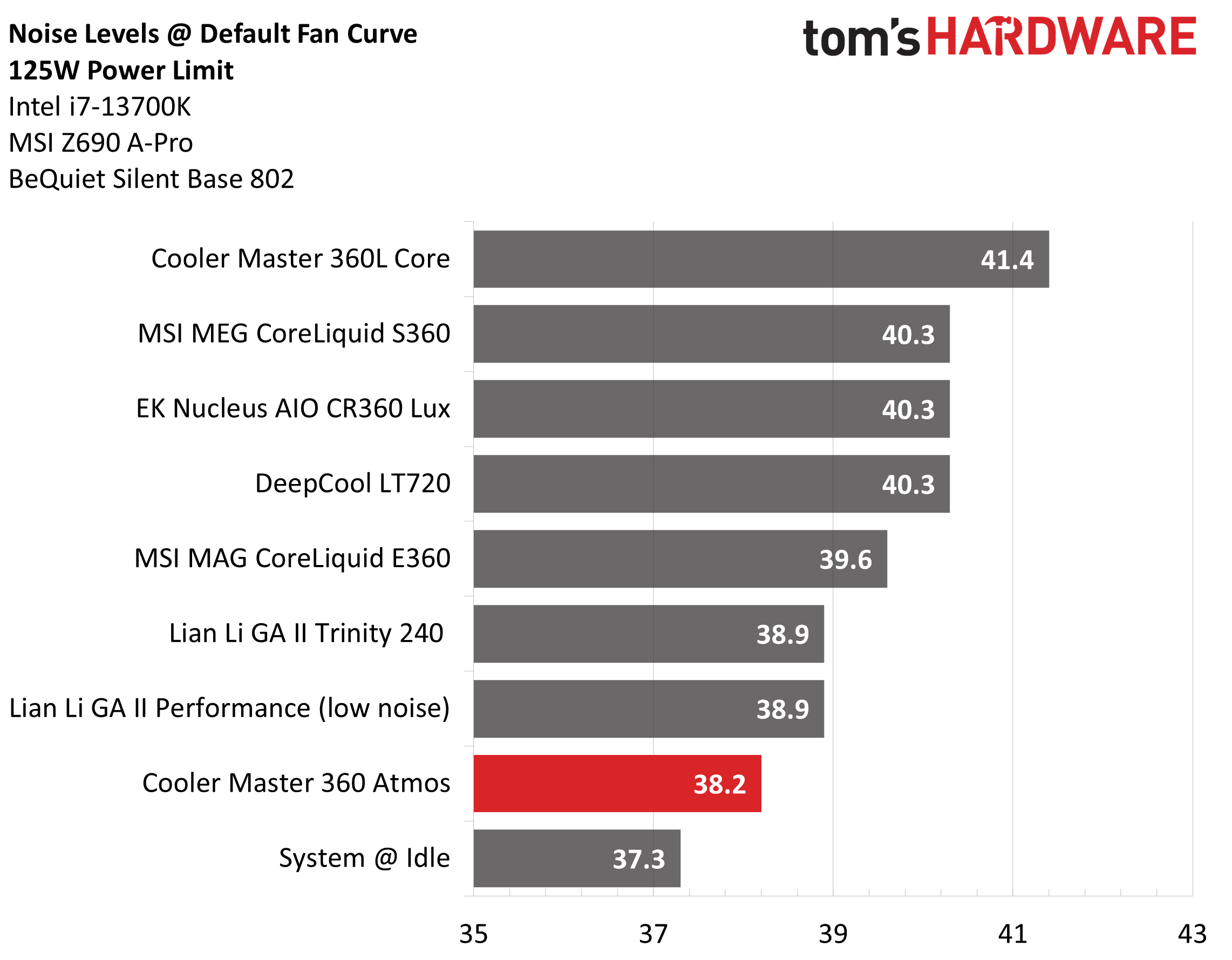Why you can trust Tom's Hardware
No Power Limits Thermal Results
Without power limits enforced on Intel’s i7-13700K, the CPU will hit its peak temperature and thermally throttle with even the strongest of air coolers. For most coolers, we’ll measure the CPU package power to determine the maximum wattage cooled.
Again, that is what I would do for most coolers, but the MasterLiquid 360 Atmos achieves a level of cooling performance that many competing liquid coolers are unable to achieve – it kept Intel’s i7-13700K under its peak temperature in this workload. As such, I’ve compared the actual temperature of the CPU in this benchmark against the scant seven products I’ve tested capable of this level of achieving the same cooling feat.
With a result of 63 degrees C over ambient, Cooler Master’s new MasterLiquid 360 Atmos ties with Lian Li for the strongest thermal result we’ve tested from any AIO. It achieves this supreme cooling performance with a maximum noise level of approximately 50 dBA. I say “approximately,” because the noise levels varied a bit at full speed.
The acoustics at full fan speed are a bit noisy and at the edge of what I consider comfortable, but it’s comparable to many other coolers of this class, which usually range from 48-52 dBA. If you are concerned about noise levels, the next section’s noise-normalized results show that the 360 Atmos excels even when the cooler is set to run quietly.
Thermal Results With Noise Normalized to 38.2 dBA
Finding the right balance between fan noise levels and cooling performance is important. While running fans at full speed can improve cooling capacity to some extent, the benefits are limited and many users prefer a quiet system. With this noise-normalized test, I’ve set noise levels to 38.2 dba. This level of noise is a low (but slightly audible to most people) volume level.
The MasterLiquid 360 Atmos does very well here, essentially on par with EKWB’s Nucleus AIO, and just behind Lian Li's latest 360 AIO. Being able to cool 233W with Intel’s i7-13700K means that this cooler can handle most workloads without any throttling at all. Only the most intensive workloads, like rendering, might cause the CPU to reach peak temperature – and any throttling should be minor.
175W Cinebench Results
Most coolers on the market are able to keep Intel’s i7-13700K under its peak temperature if the power consumption is limited, so for this test, we’ll be looking at the CPU’s actual temperature. Cooler Master’s results were especially impressive here, tied with Lian Li and EKWB for the coolest CPU temperature in this 175W workload.
But how about noise levels? Well, those are simply excellent. At only 40.9 dBA here, this is the second-quietest result I’ve seen from liquid coolers of this class. A result like this means that you don’t really need to tune your fans with this cooler. Only the most extreme workloads will cause the cooler to run loudly in a default configuration.
Get Tom's Hardware's best news and in-depth reviews, straight to your inbox.
125W Cinebench Results
The lowest power limit I test with Raptor Lake CPUs is 125W. This is a high enough limit to allow the CPU to maintain its base clock speeds even in the most intensive tests, and most coolers should be capable of keeping the CPU below TJmax (the max temperature before throttling) – even low-end coolers.
Really, thermals do not matter in this scenario. Even Intel’s stock cooler can handle a load like this with ease. Noise levels, rather than CPU temperature, are the most important factor here. That said, the MasterLiquid 360 Atmos continues to deliver impressive thermal performance with the second-coolest result of 58 degrees C.
When it comes to acoustics, Cooler Master’s new AIO reigns supreme in this scenario, with an observed noise level of only 38.2 dBA. This is the quietest result I’ve seen from any AIO of this class.
Conclusion
After installing and testing it, I found Cooler Master’s new MasterLiquid 360 Atmos especially impressive. It’s apparent the company looked to several areas to improve its flagship AIO. It has an incredibly low noise profile in most common workloads and provides among the best thermal performance I’ve seen from any 360mm AIO.
The attention to detail that Cooler Master’s team gave when designing every aspect of this product is apparent – and the rated lifespans of over 160,000 hours for the fans and 210,000 hours for the pump, combined with a 5-year warranty, show that Cooler Master truly backs the quality of this product.
Lian Li's Lian Li's competing Galahad II Performance 360 performs a bit better in some tests than Cooler Master's offering, and slightly worse in others. The Lian Li cooler (which is also plenty attractive) has a slightly higher MSRP of $169. At that price, Cooler Master's 360 Atmos is easy to recommend at its $149 MSRP. But in the weeks since its launch, we've seen Lian Li's cooler selling for less than $160. So it seems that pricing here will be fairly close. Neither one should disappoint you on the cooling and features front, so if the price is about the same, you should probably pick which model you like the looks of more.

Albert Thomas is a contributor for Tom’s Hardware, primarily covering CPU cooling reviews.







